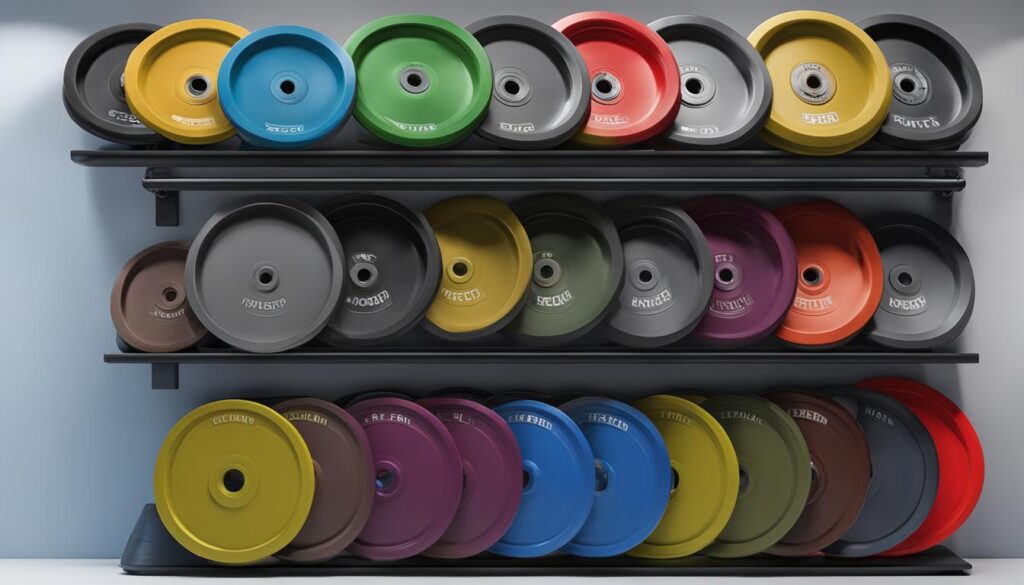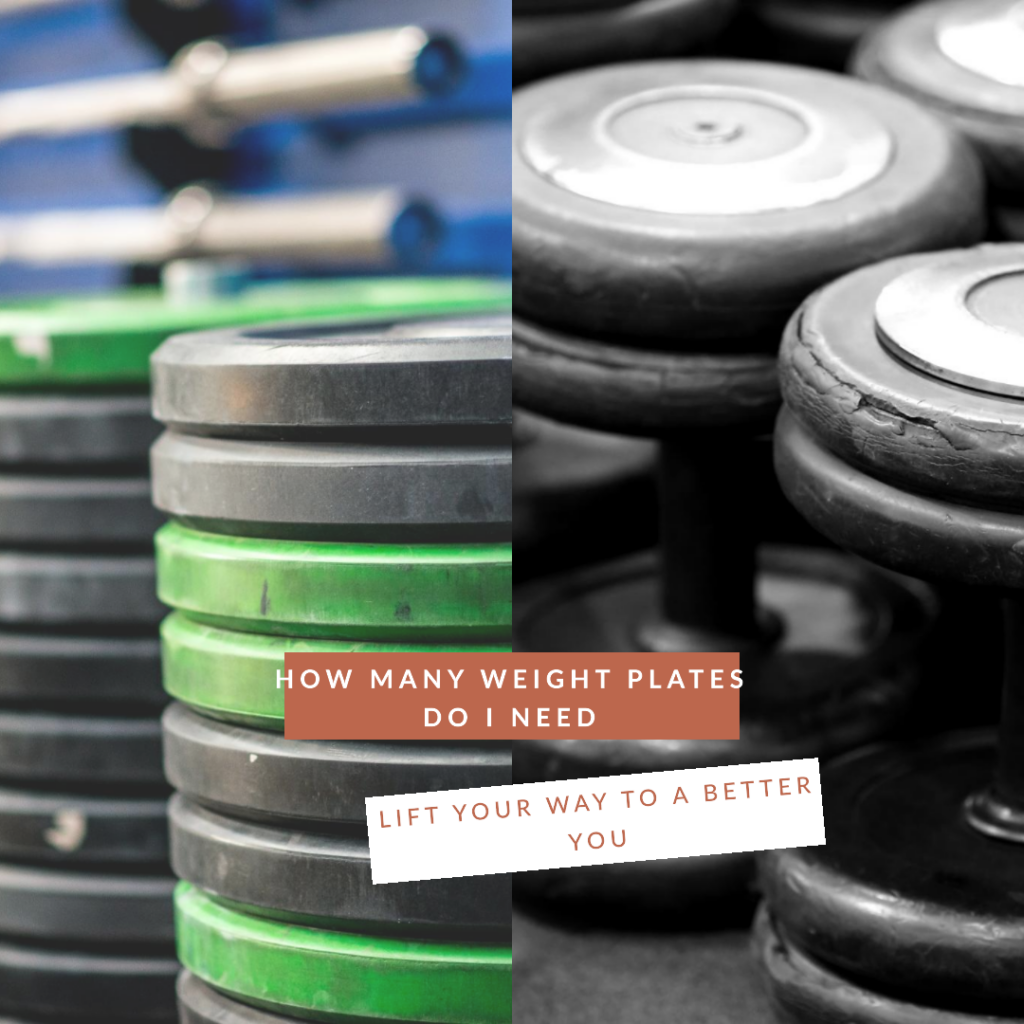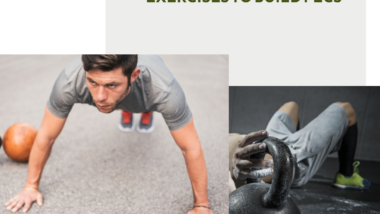How Many Weight Plates Do I Need
Setting up a home gym for weightlifting requires careful consideration of how many weight plates do i need. This decision plays a vital role in ensuring effective training and progress in your home workouts.
By taking into account factors such as your current strength level, fitness goals, and the types of exercises you plan to perform, you can curate an optimal set of weight plates that will support your fitness journey.
Key Takeaways:
- Determine how many weight plates you need based on your strength level, fitness goals, and the exercises you plan to perform.
- Weight plates come in different sizes and types, including bumper plates, Olympic plates, and standard plates.
- Consider adding larger and smaller plates for weight progression and exercise versatility.
- Specialty bars may require additional weight plates with specific denominations for compatibility.
- Continuously assess your progress and make adjustments to your weight plate collection to ensure ongoing growth.

Understanding Weight Plate Sizes and Types
Weight plates come in a variety of sizes and types, each serving a different purpose in weightlifting. Common sizes include 45 lbs, 35 lbs, 25 lbs, 10 lbs, 5 lbs, and 2.5 lbs.
The size of the plate is typically measured in pounds or kilograms, with standard variations depending on the location.
In addition, weight plates can be categorized into different types such as bumper plates, Olympic plates, and standard plates.
Bumper plates are often made of rubber and are designed for Olympic lifting movements, while Olympic plates and standard plates are made of materials like cast iron and can be used for a wide range of exercises.
Understanding the sizes and types of weight plates available will help you make informed decisions when selecting the plates for your home gym.
The Benefits of Different Weight Plate Sizes
Weight plate sizes offer various benefits depending on your training goals. Here are a few key advantages:
- Progressive Overload: Larger weight plates, such as 45 lbs, allow for more significant increases in strength over time as you can add more weight to the barbell.
- Fine-tuning: Smaller weight plates, such as 2.5 lbs, enable precise adjustments to the load, allowing for smaller increments in weight progression.
- Exercise Variety: Having a range of weight plate sizes allows you to perform a wide variety of exercises, from heavy compound lifts to isolation exercises.
- Efficient Loading: Different weight plate sizes make it easier to load and unload the barbell quickly, facilitating smooth transitions between exercises.
By incorporating weight plates of various sizes, you can tailor your workouts to meet specific training objectives and ensure continued progress in your weightlifting journey.
Weight Plate Types and Their Applications
Weight plates are also available in different types to suit specific training needs. Here’s a breakdown of the most common weight plate types:
- Bumper Plates: Made of rubber and designed for Olympic lifting, bumper plates are durable and can be dropped safely without damaging the floor or equipment.
- Olympic Plates: These plates are made of materials like cast iron and are used in Olympic weightlifting. They are highly accurate in terms of weight, making them ideal for competitive lifting.
- Standard Plates: Standard plates are also made of materials like cast iron and are suitable for general weightlifting and strength training. They are a cost-effective option for home gyms.
Each type of weight plate offers unique characteristics and advantages, so choose the one that aligns with your training goals and budget.
| Weight Plate Sizes | Type | Benefits |
|---|---|---|
| 45 lbs | Bumper Plates, Olympic Plates, Standard Plates | Progressive Overload, Exercise Variety |
| 35 lbs | Olympic Plates, Standard Plates | Progressive Overload, Exercise Variety |
| 25 lbs | Olympic Plates, Standard Plates | Progressive Overload, Exercise Variety |
| 10 lbs | Olympic Plates, Standard Plates | Progressive Overload, Exercise Variety |
| 5 lbs | Olympic Plates, Standard Plates | Progressive Overload, Exercise Variety |
| 2.5 lbs | Olympic Plates, Standard Plates | Fine-tuning, Exercise Variety |
By understanding the sizes and types of weight plates available, you can make educated choices when building your home gym setup and ensure that you have the right plates to support your weightlifting goals.
Factors to Consider When Determining Quantity
When determining how many weight plates you will need for your home workouts, it’s important to consider several factors.
These factors include your fitness goals, strength level, types of exercises you plan to perform, and your desire to progress in your workouts.
Firstly, your fitness goals play a crucial role in determining the quantity of weights you’ll need.
If your goal is to build muscle and increase overall strength, you may require a larger quantity of weight plates to challenge yourself.
On the other hand, if your goal is to maintain fitness or focus on specific exercises, you may need a smaller quantity of plates.
Secondly, your current strength level is an important consideration. If you’re a beginner, you may require fewer weight plates as you gradually increase your strength.
However, if you’re more advanced, you may need a larger quantity of plates to continue challenging yourself and making progress.
Lastly, the types of exercises you plan to perform should also be taken into account. Different exercises require different amounts of weight, and it’s essential to have enough weight plates to suit your exercise routine.
For example, compound exercises like squats and deadlifts typically require heavier weights, while isolation exercises may require lighter weights.
By considering these factors and finding the right balance, you can determine the appropriate quantity of weight plates for your home gym.
Having enough weight plates to challenge yourself and progress in your workouts is crucial, but it’s also important to avoid overbuying.
By understanding your fitness goals, strength level, types of exercises, and desire for progress, you can curate a collection of weight plates that will support your fitness journey and help you reach your weightlifting goals.
Recommendations for a Basic Starter Set
When starting out with weightlifting, it can be overwhelming to determine the right number and assortment of weight plates to include in your home gym.
To simplify the process, I recommend considering a basic starter set that provides a solid foundation for your weightlifting journey. This set should include a combination of Olympic plates or bumper plates to suit your preferences.
A typical basic starter set consists of the following weight plate assortment:
| Plate Size | Number of Plates |
|---|---|
| 45 lbs | 2 |
| 35 lbs | 2 |
| 25 lbs | 2 |
| 10 lbs | 2 |
| 5 lbs | 4 |
| 2.5 lbs | 2 |
This assortment provides a total weight of 300 lbs when paired with a 45 lb barbell, which is suitable for most beginners.
However, keep in mind that the specific combination of plate sizes may vary based on whether you choose Olympic plates or bumper plates. Consider your budget and preferences when selecting the type of plates for your basic starter set.
By starting with a basic set like this, you will have a range of weight options to accommodate different exercises and progress in your training.
As you advance, you can gradually add additional plates to your collection to increase the challenge and versatility of your workouts.
Additional Plates for Progression and Versatility

As you progress in your weightlifting journey, it’s important to have additional weight plates to continue challenging yourself and achieving your fitness goals.
Adding larger plates to your collection, such as 45 lb plates, allows you to increase the total weight on the bar and reach higher weight goals.
These larger plates are not only beneficial for strength training but also for facilitating ease of loading and unloading the barbell.
On the other hand, smaller plates, such as 2.5 lb plates, play a crucial role in fine-tuning the amount of weight on the bar.
These smaller increments in weight progression can help you gradually increase the challenge of your lifts and make steady progress over time.
They are especially useful for exercises that require smaller weight adjustments, such as shoulder raises or tricep extensions.
To maximize exercise versatility and accommodate a wide range of movements, it’s essential to have a variety of plate sizes.
By incorporating both larger and smaller plates into your collection, you can ensure that you have the necessary weight options to perform different exercises effectively.
Whether you’re focusing on compound lifts like squats and deadlifts or isolation exercises for specific muscle groups, having a diverse range of weight plates will allow you to customize your workouts and target different areas of your body.
| Plate Size | Usage |
|---|---|
| 45 lbs | Facilitate higher weight goals, ease of loading and unloading |
| 2.5 lbs | Fine-tuning weight on the bar, smaller weight progression increments |
| Various sizes | Accommodate different exercises and muscle groups |
By strategically incorporating additional plates, both larger and smaller, into your home gym, you can ensure continuous progression, prevent plateaus, and maintain exercise versatility.
Remember to reassess your fitness goals and adjust your weight plate collection accordingly as you advance in your weightlifting journey.
Considering Specialty Bars and Exercise Variety
When it comes to creating a diverse and effective workout routine, incorporating specialty bars into your weightlifting regimen can provide a multitude of benefits.
Specialty bars, such as trap bars, EZ bars, or specialty curl bars, offer unique grip variations and targeting options for specific muscle groups. However, it’s important to consider how these specialty bars will affect your weight plate compatibility.
Different specialty bars may have varying weight specifications and diameter requirements, which can impact the plates you need for loading and unloading.
Suppose you plan to switch between different bars quickly or superset exercises using multiple barbells. In that case, it’s crucial to have the appropriate number and sizes of weight plates to accommodate these specialized barbell needs.
By evaluating your exercise variety and the need for multiple barbells, you can determine the weight plate compatibility required for your specialty bars.

This ensures seamless transitions between exercises and efficient loading and unloading of plates, allowing you to focus on getting the most out of your workouts.
Remember, as with any weightlifting equipment, safety should always be a priority.
Make sure to familiarize yourself with the proper form and technique for using specialty bars and consult with a fitness professional if needed to ensure you are using them correctly and safely.
| Specialty Bar | Weight Specifications | Diameter Requirements | Recommended Weight Plates |
|---|---|---|---|
| Trap Bar | Varies depending on the design | Varies depending on the design | Consult manufacturer’s guidelines |
| EZ Bar | Varies depending on the design | Varies depending on the design | Consult manufacturer’s guidelines |
| Specialty Curl Bar | Varies depending on the design | Varies depending on the design | Consult manufacturer’s guidelines |
FAQs
Q: How many weight plates do I need for my home gym?
A: The number of weight plates you need for your home gym will depend on your fitness goals and the type of exercises you plan to do. Consider the variety of weight plate denominations such as 35-pound plates, change plates, and kilogram plates, to determine how many weights to buy for your home gym.
Q: What types of weight plates should I consider for my home gym?
A: When deciding how many weight plates to buy for your home gym, consider investing in bumper plates, iron plates, cast iron plates, and change plates. These types of weight plates provide a versatile range of options for your weight training needs.
Q: How much weight do I need for my home gym?
A: The amount of weight you need for your home gym will depend on your strength level and the type of exercises you plan to do. Consider a variety of weight plate denominations such as 35-pound plates, kilogram plates, and change plates to determine how much weight to buy for your home gym.
Q: Do I need to buy a complete set of weight plates for my home gym?
A: You don’t necessarily need to buy a complete set of weight plates for your home gym. Evaluate your fitness goals and the type of exercises you will be doing to determine the exact number of weight plates you’ll need.
Q: What are the essential weight plates I need for my home gym?
A: When setting up your home gym, it’s essential to have a barbell and weight plates to provide a variety of resistance levels for exercises such as bench press and weight training. Consider investing in standard weight plates, pound plates, and kilogram plates to meet your needs.
Q: How do I determine how many weight plates I’ll need for my home gym?
A: To determine how many weight plates you’ll need for your home gym, consider the type of exercises you plan to do and the variety of weight plate denominations available such as 35-pound plates, change plates, and kilogram plates. Assess your strength level and weight training needs to make an informed decision.
Q: Should I invest in change plates for my home gym?
A: Investing in change plates for your home gym provides the advantage of easily increasing or decreasing the weight on your barbell, which can be beneficial for progressive overload and varying resistance levels in your workouts.
Q: What are the benefits of having a weight plate stand in my home gym?
A: Having a weight plate stand in your home gym can help keep your workout area organized and prevent potential tripping hazards. It also makes it convenient to access and store your weight plates, creating a clean and efficient workout space.
Q: How should I prioritize buying plates for my home gym?
A: When deciding on the number of weight plates to buy for your home gym, prioritize the denominations of weight plates that align with the type of exercises you plan to do. Assess your fitness goals and the variety of weight plate options available to make an informed purchasing decision.
Q: How many extra weight plates should I consider for my home gym?
A: It’s advisable to consider purchasing a few extra weights for your home gym, as it provides the flexibility to gradually increase your strength level and progress in your weight training. Having additional plates can accommodate your evolving fitness needs.
Final Thoughts
As I wrap up my exploration of weight plate needs for home workouts, it’s clear that finding the right weight plate set is crucial for creating an effective home gym.
Your fitness journey is unique, and having the appropriate tools will support your progress and help you achieve your weightlifting goals.
Building a home gym with the right weight plate set requires thoughtful consideration. Take into account your fitness goals, current strength level, and the variety of exercises you plan to perform.
By doing so, you can curate a collection of weight plates that will challenge you and prevent the need for excessive purchases.
Whether you choose Olympic plates or bumper plates, the key is to strike a balance in your weight plate set. By continuously evaluating your progress and making adjustments as needed.
You can ensure that your weight plate collection evolves with your fitness journey and supports your ongoing growth.


